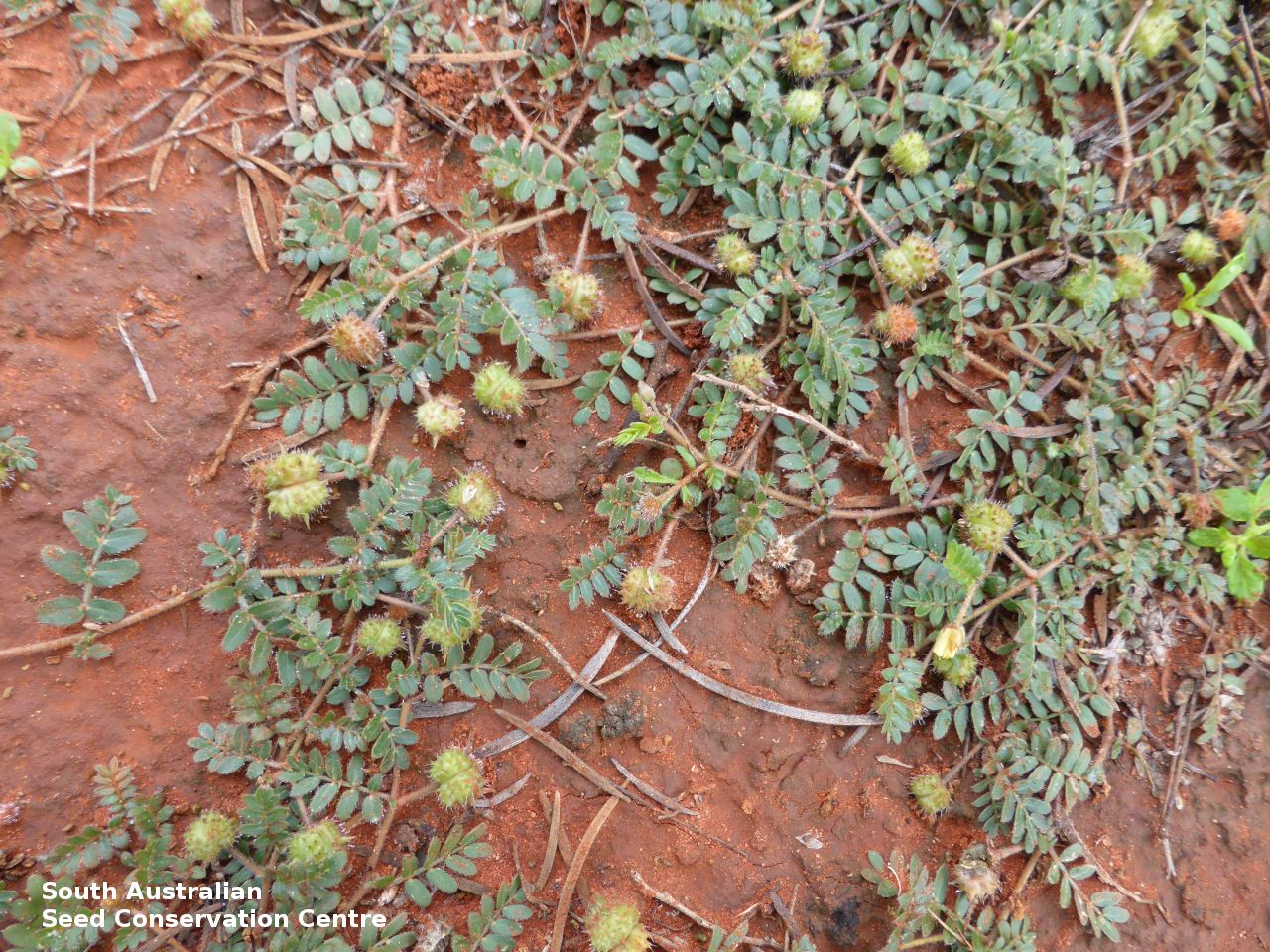
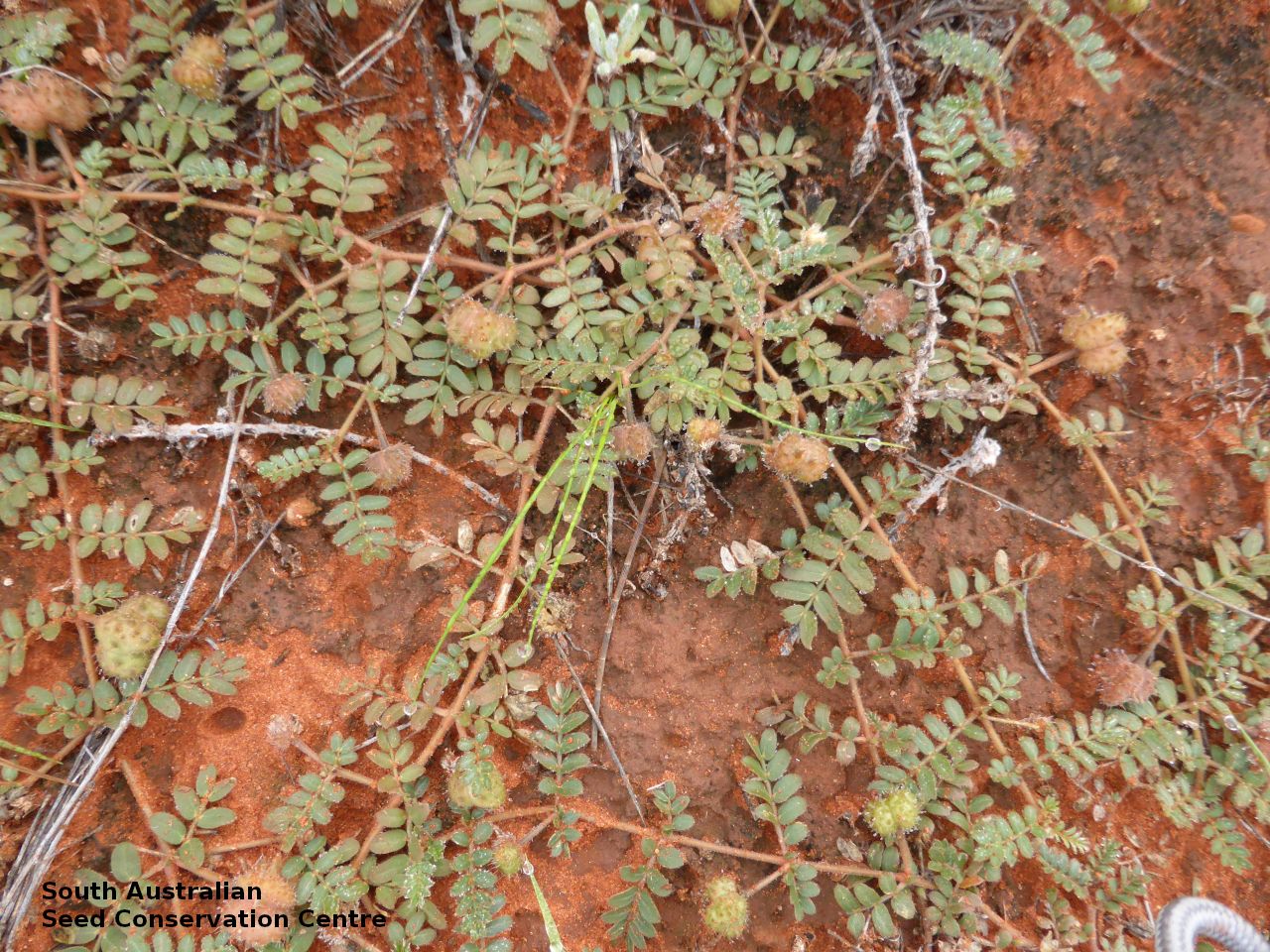
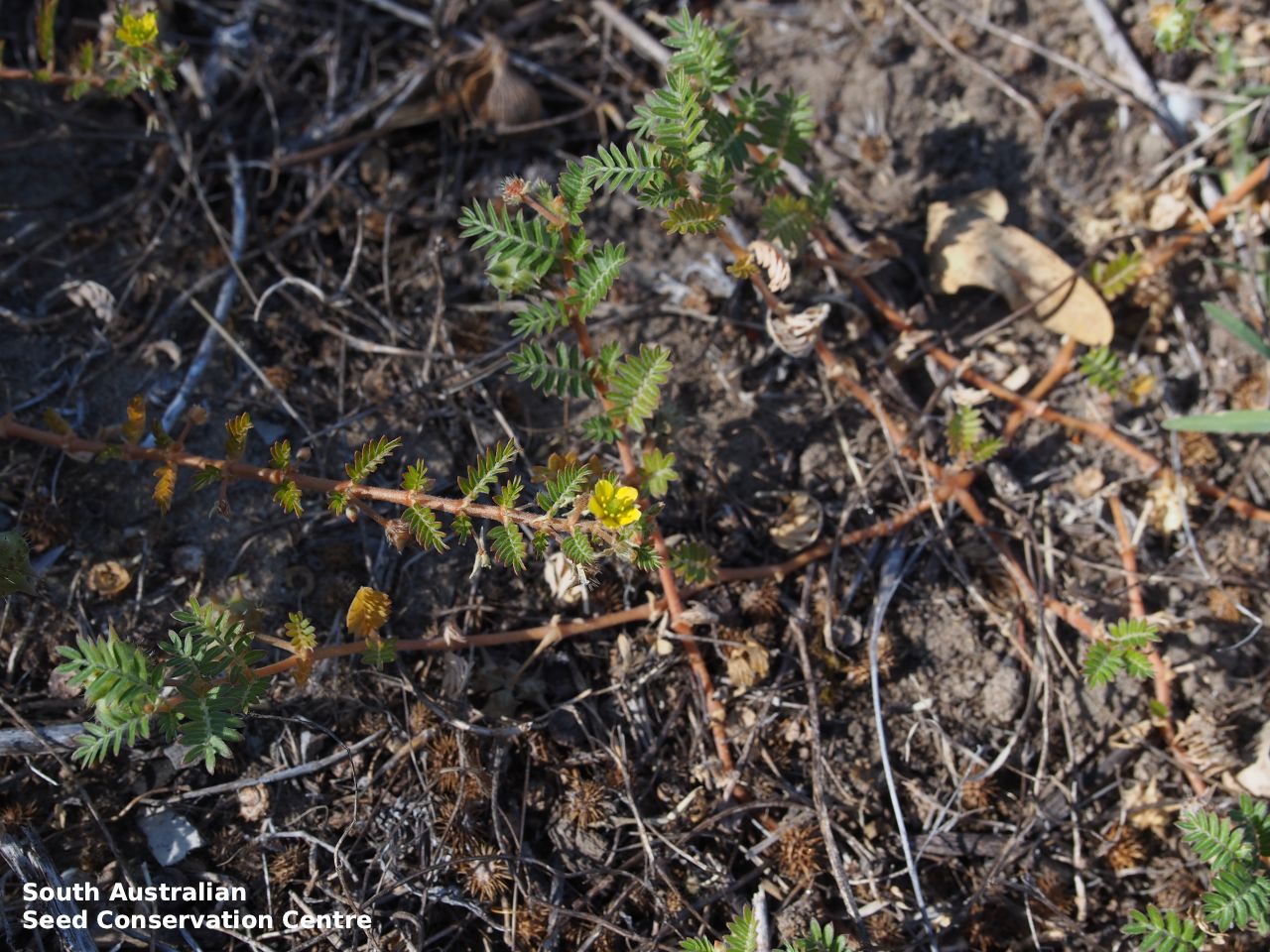
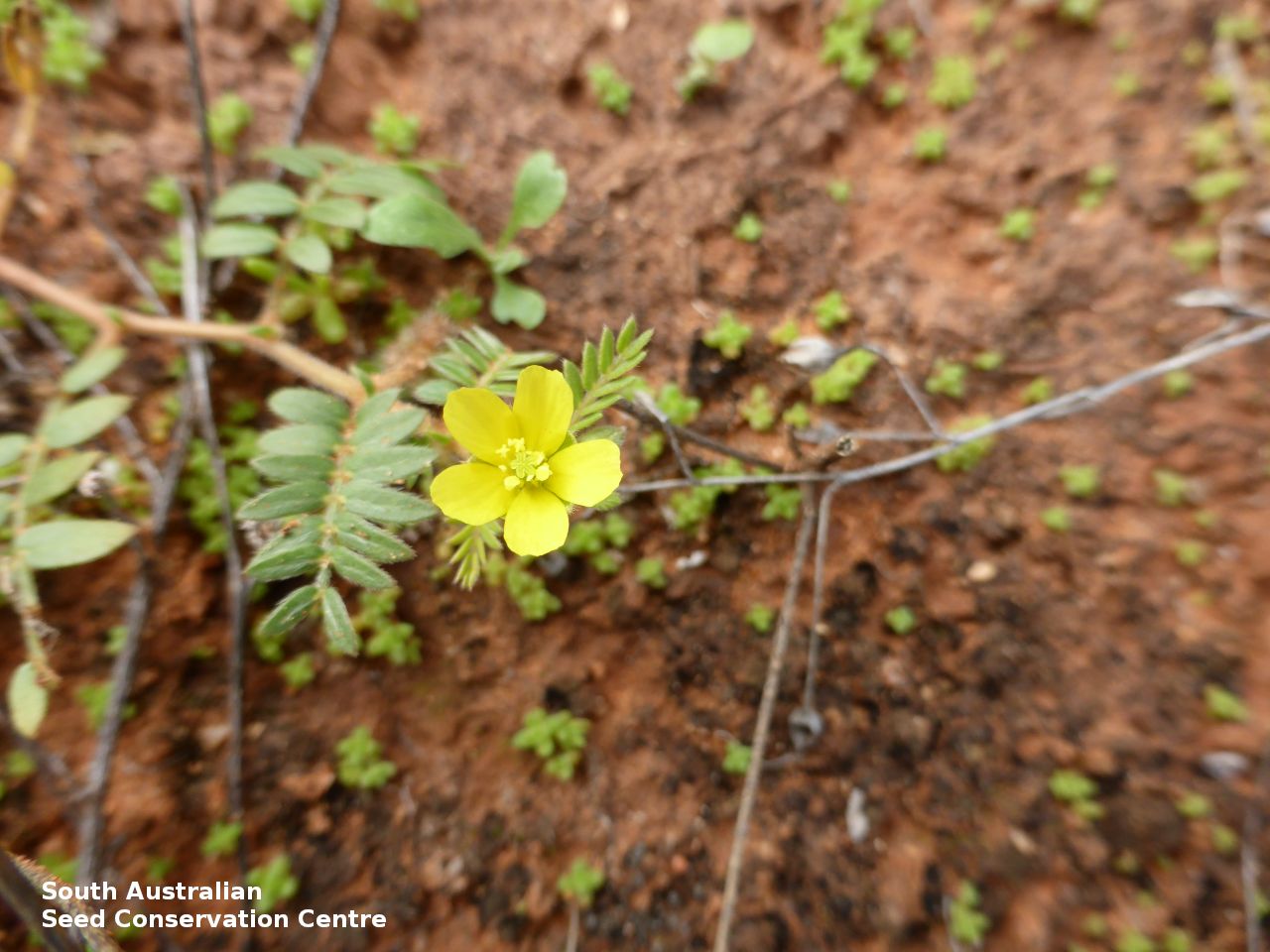
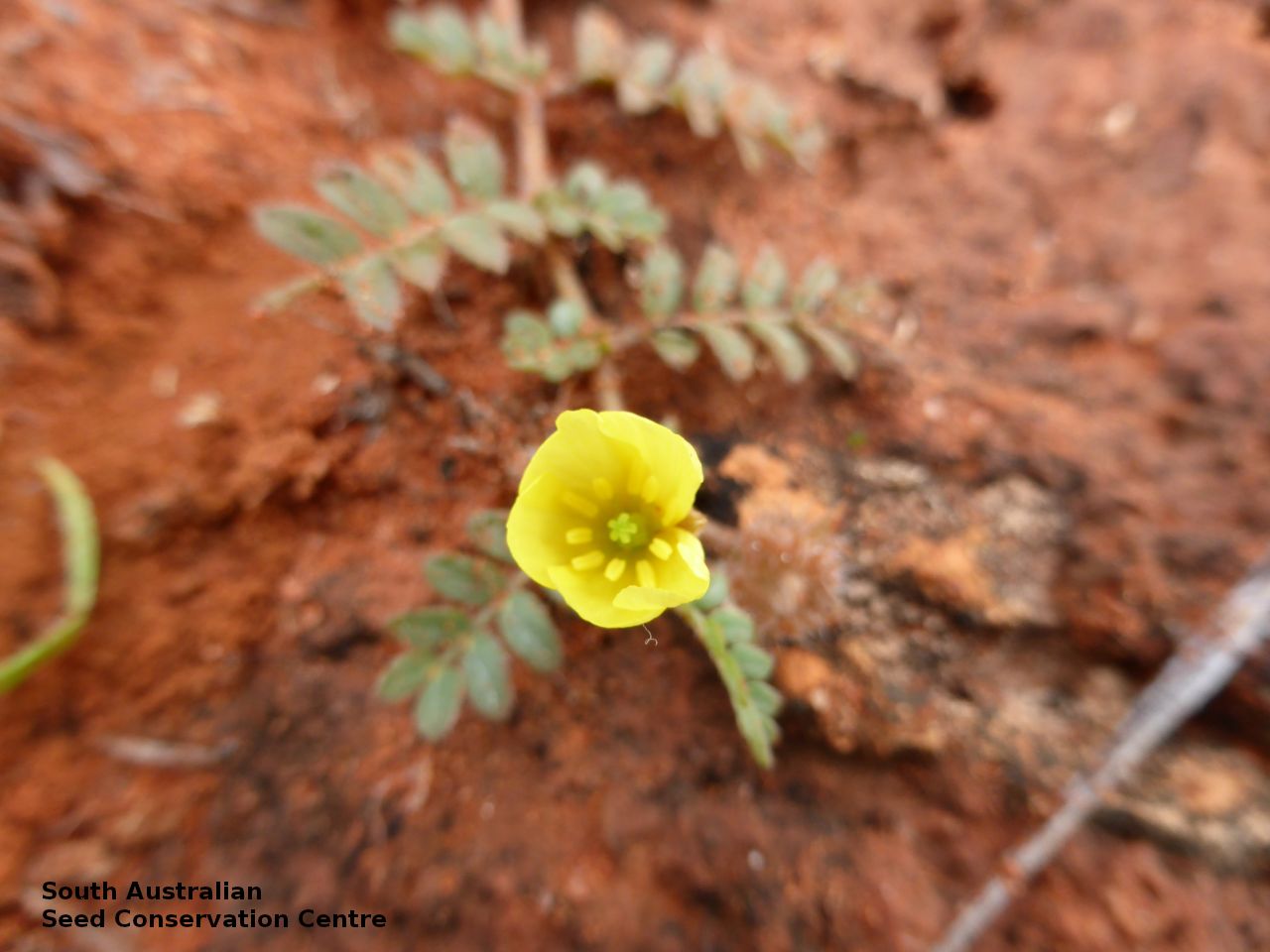
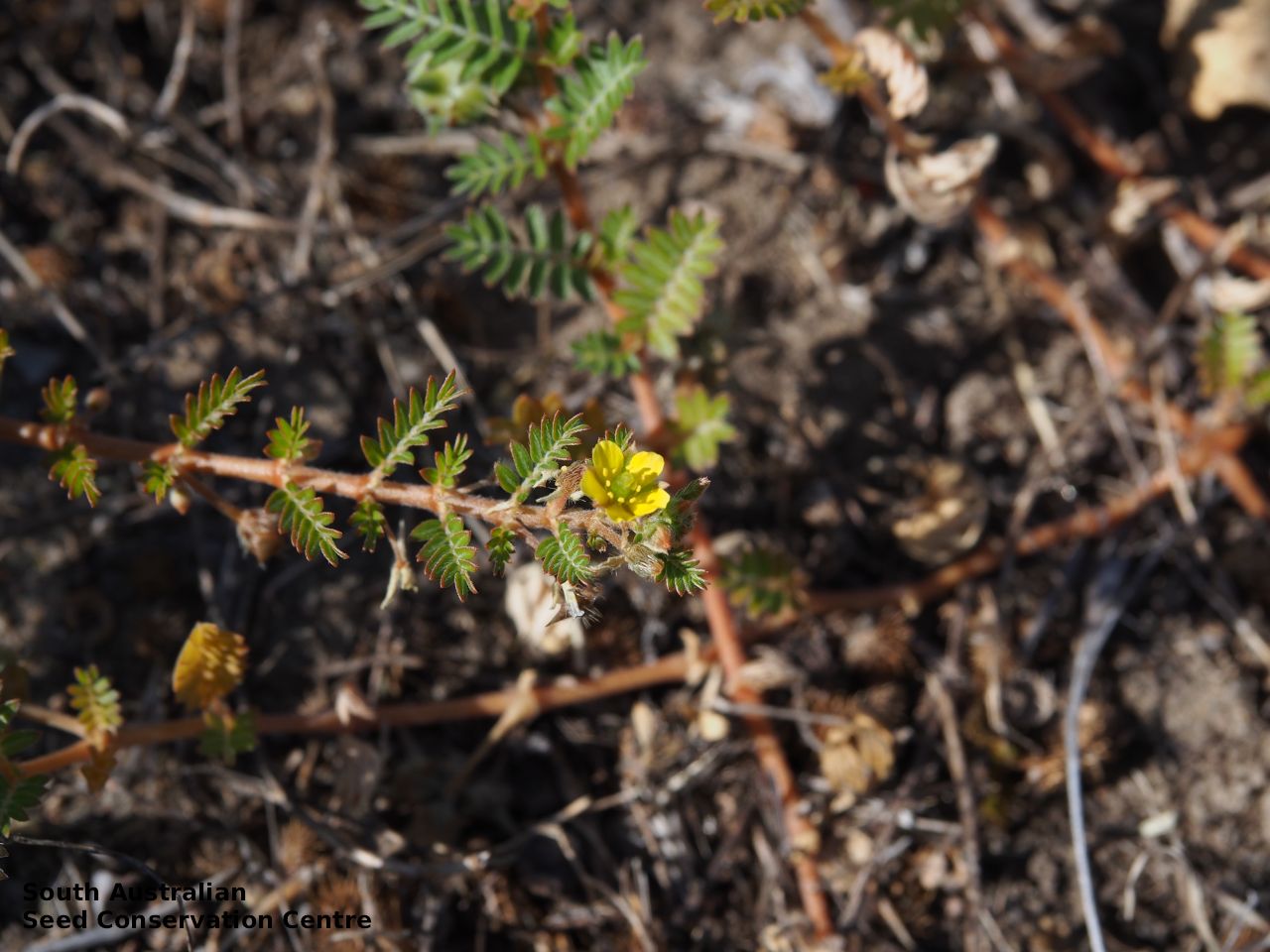
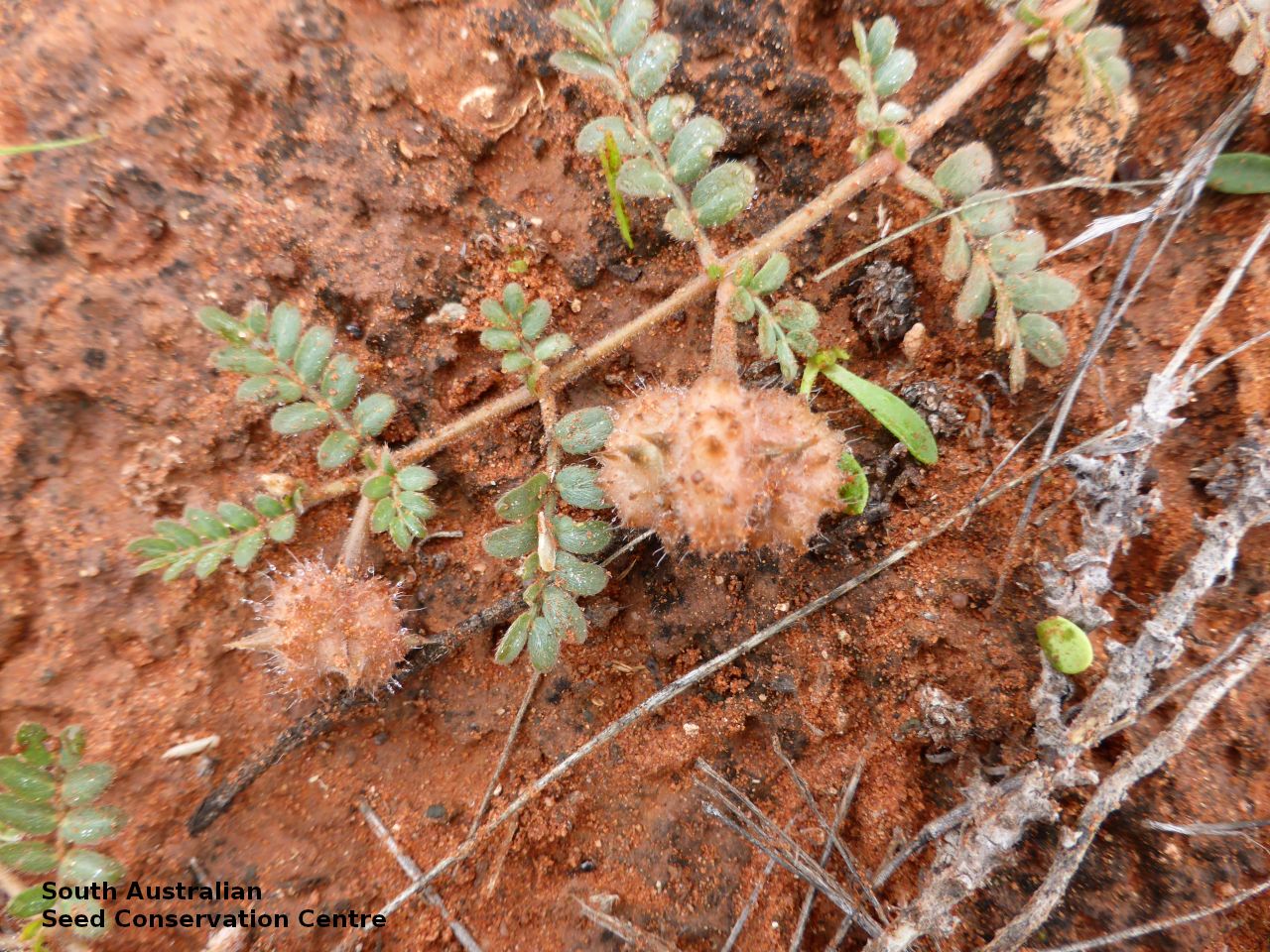
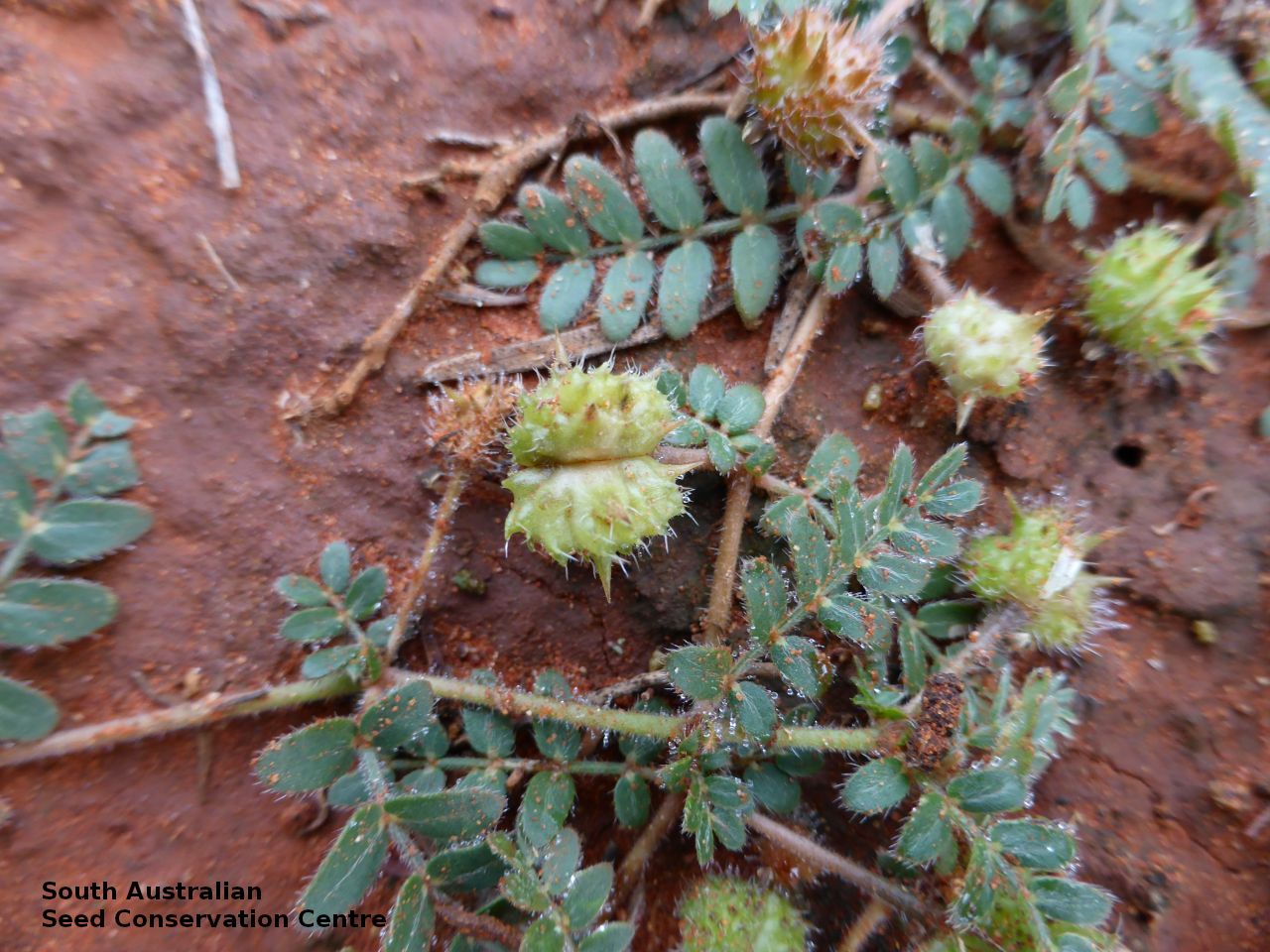
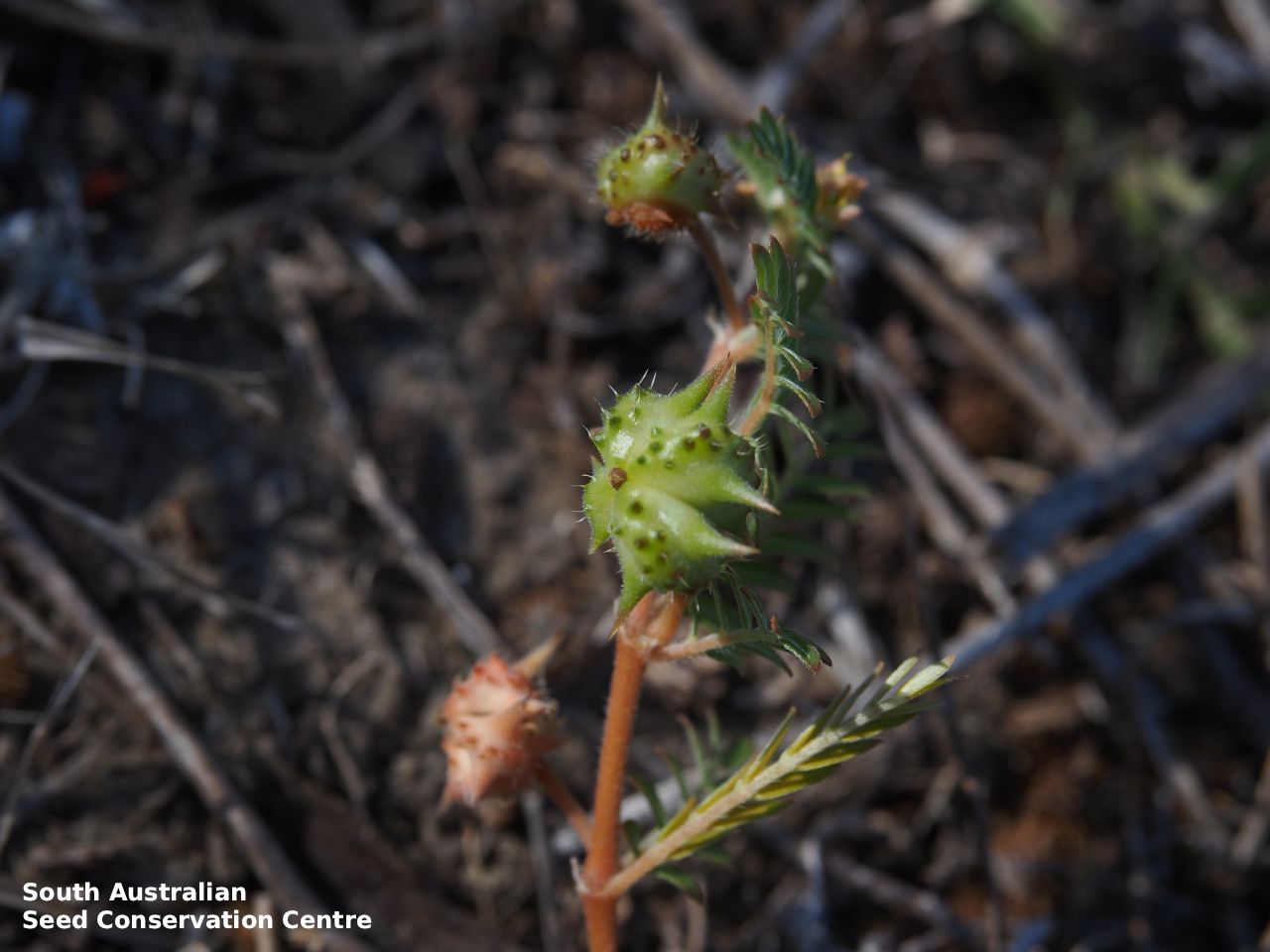
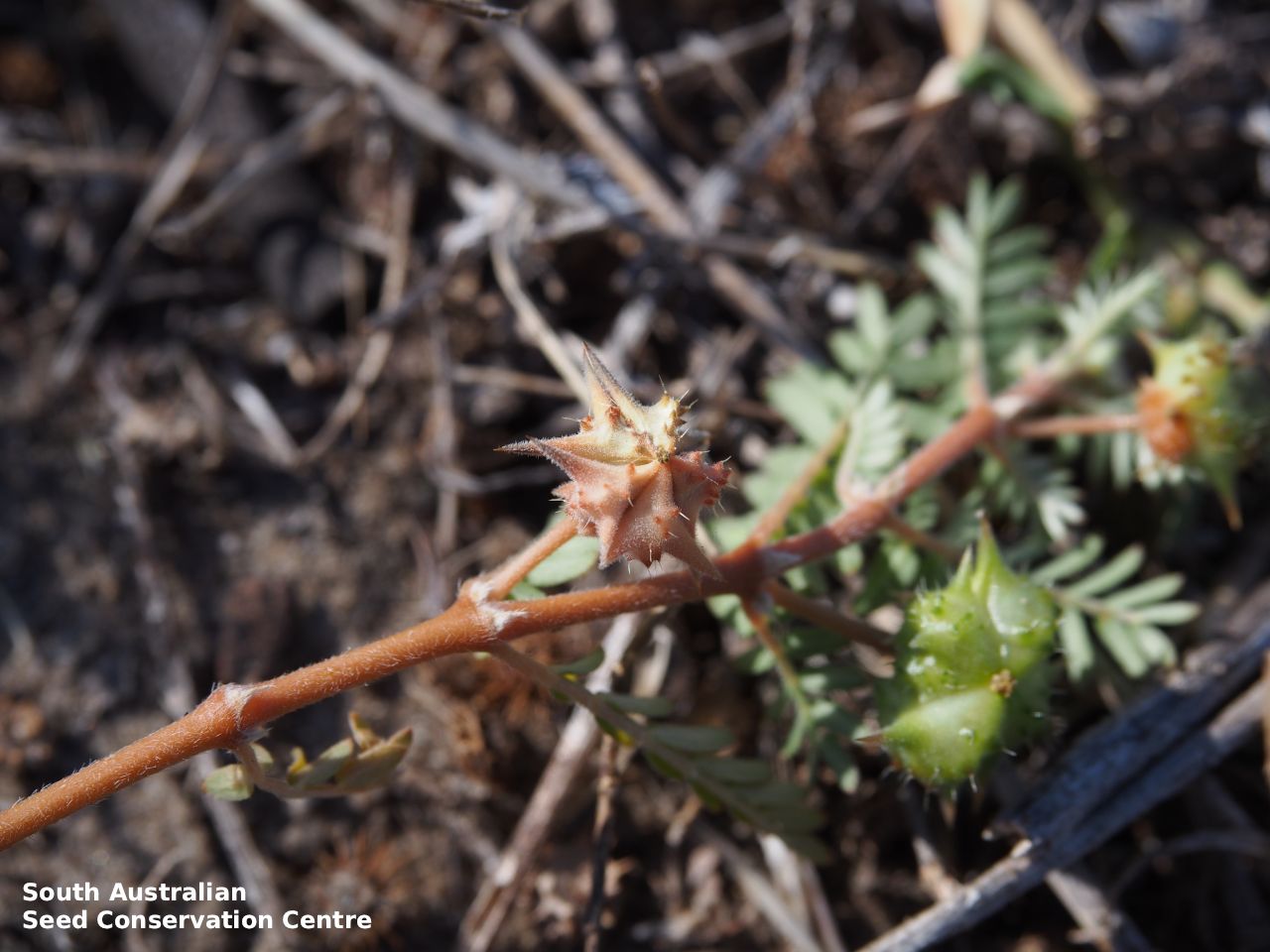
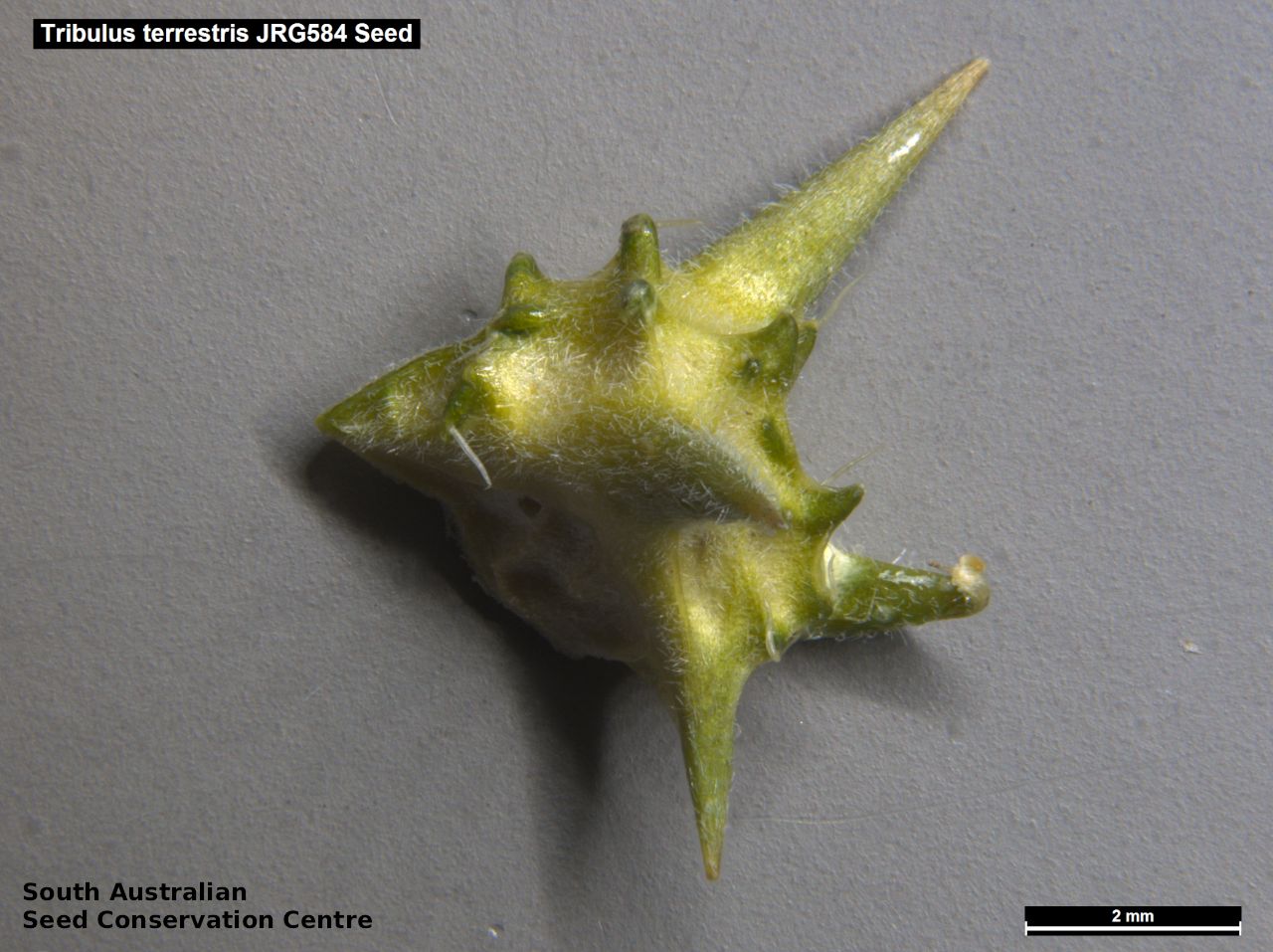
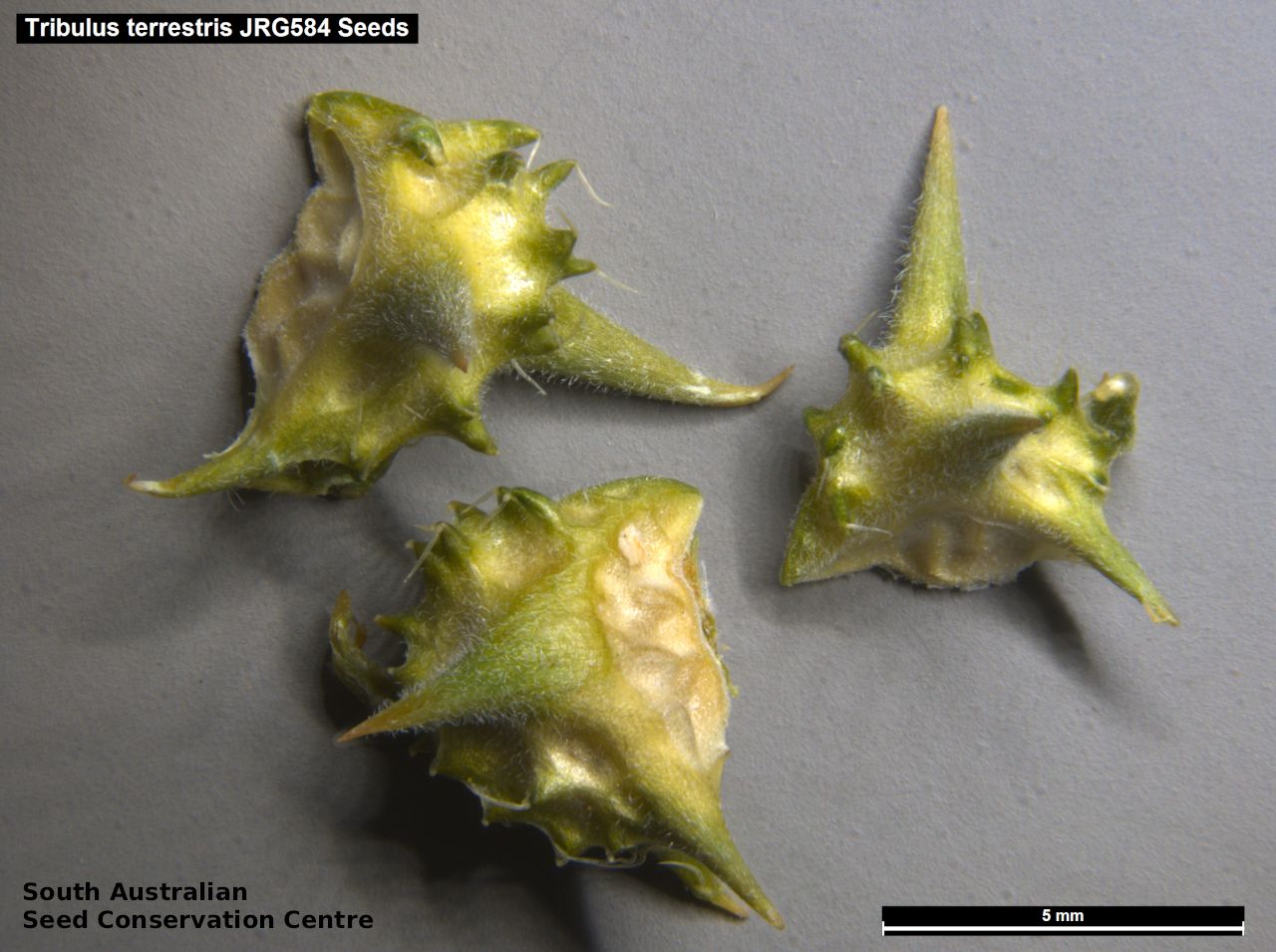
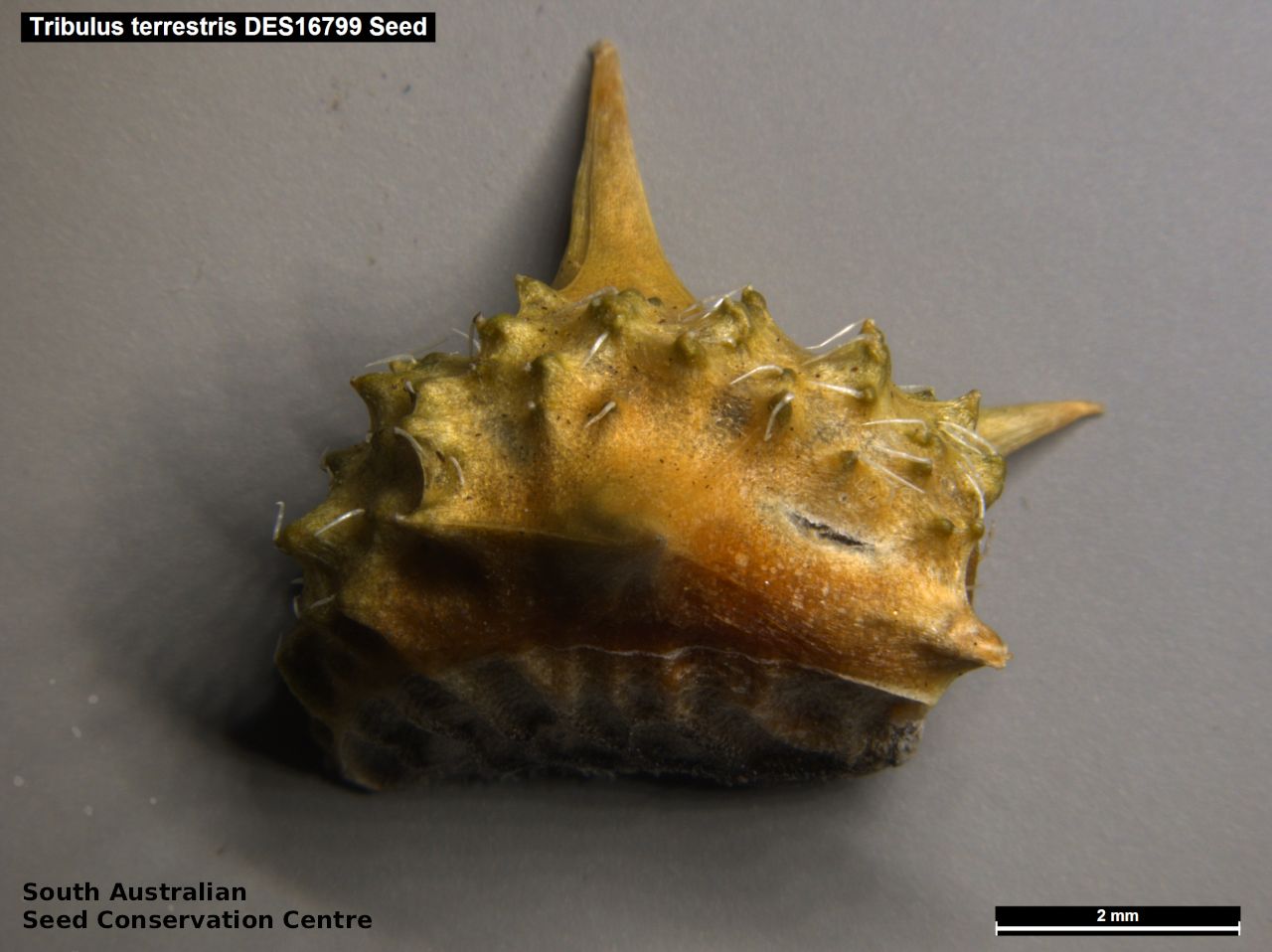

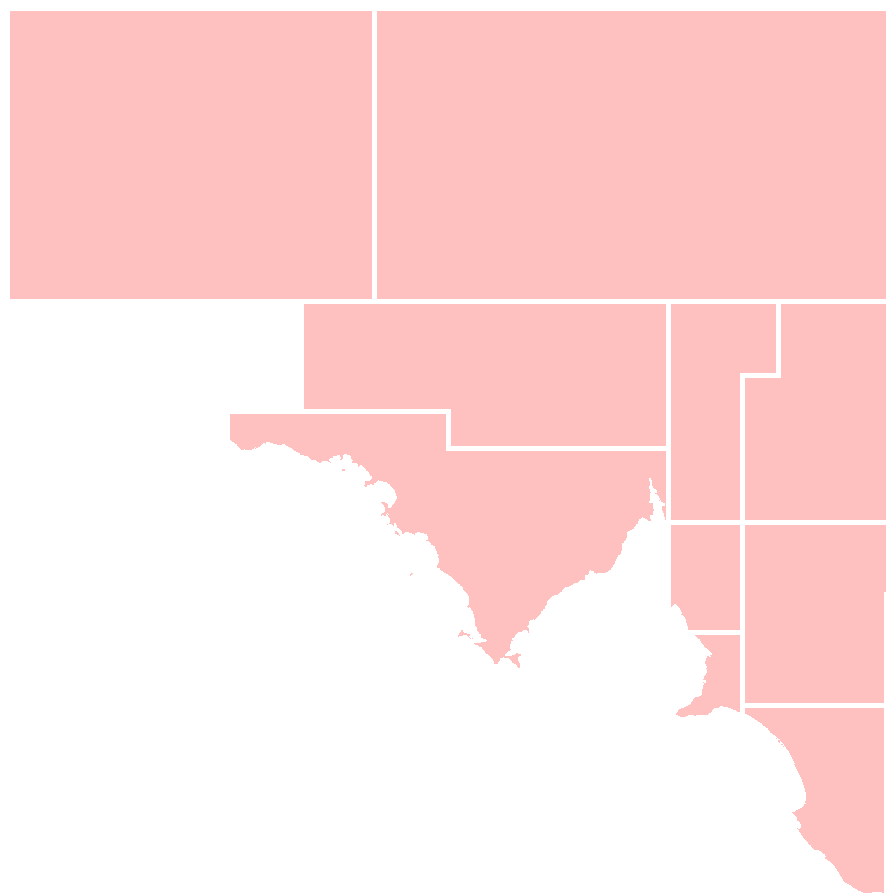
Botanical art
Prior names
Tribulus terrestris f. long style
Tribulus terrestris f. short style
Common names
Caltrop
Cat-head
Declared weed
A Declared weed in South Australia (external link)
Etymology
Tribulus from the Greek 'tribolos' meaning water-chestnut and translated into Latin as 'tribulos' which originally meant the caltrop, a 4-pointed military instrument, employed to lame advancing cavalry, and the name also applied to Tribulus terrestris. Terrestris from the Latin 'terra' meaning earth and 'astris' meaning -ish; possibly referring to the species prostrate habit.
Distribution and status
An introduced species native to Old World tropical and subtropical regions in Asia, Africa, Mediterranean Europe and northern Australia and recorded across South Australia, growing in disturbed sites and waste land. Introduced to Western Australia, New South Wales and Victoria. Considered native in Queensland. Status uncertain in the Northern Territory. Introduced. Common in South Australia. Common in the other states.
Herbarium regions: North Western, Lake Eyre, Gairdner-Torrens, Flinders Ranges, Eastern, Eyre Peninsula, Northern Lofty, Murray, Southern Lofty, South Eastern, Green Adelaide
AVH map: SA distribution map (external link)
Plant description
Prostrate hairy annual herb. Leaves opposite, unequal, with 4-7 pairs of leaflets, leaflets obliquely oblong to 10 mm long. Flowers yellow to 15 mm diameter with 5 petals to 6 mm long and sepals to 3 mm long. Flowering between February and July. Fruits are woody ball to 10 mm long, glabrous or lightly hairy, with 2 divergent spines to 8 mm long in the upper part and 2 shorter spines near the base pointing downwards and breaking into 5 segments. Seeds are contained in the woody segment. Seed embryo type is spatulate fully developed.
Seed collection and propagation
Collect seeds between April and January. Collect fruits that are hard and turning brown. Some fruits maybe split and laying on the ground. Be careful when collecting as fruits are spiny. No further cleaning is required if only fruits are collected. Store the seeds with a desiccant such as dried silica beads or dry rice, in an air tight container in a cool and dry place. Seed viability is usually high. This species has physical dormancies that needs to be overcome for the seed to germinate.